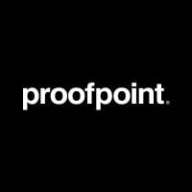Saves us time, has good visibility, and a single dashboardThe solution is user-friendly and provides great visibility into threats. There are easy options available for specific workflow inspections. We can also get support by going through the Microsoft documentation, which is straightforward. Microsoft Defender for Cloud Apps helps us prioritize threats across our enterprise. It covers us from a compliance perspective and protects our organization's data. Data protection is a very important aspect of any new organization, as we need to protect our data from both external attacks and insider threats. Microsoft Defender for Cloud Apps helps us monitor for abnormal activity by insiders, which is one of the most important access points for attackers today. Additionally, the different cloud apps that Defender for Cloud Apps supports provide us with much more visibility into potential threats and activities on the internet. We have integrated Microsoft Defender for Cloud Apps alerts with Sentinel. The integration is straightforward. We can find the configuration details on Microsoft's official documentation website. If we are familiar with how Microsoft products work, we will be able to follow the instructions clearly. Microsoft Defender for Cloud Apps and Sentinel work natively together to deliver coordinated detection and response across our environment. Our integrated Microsoft solutions provide comprehensive threat protection, covering most of the tactics and techniques relevant to the MITRE ATT&CK framework. Sentinel allows us to ingest data from our entire ecosystem. When implementing an SIEM solution, there are always prerequisites such as Active Directory logs, security logs, firewall logs, and DNS logs. These are important logs that need to be ingested into the environment. Sentinel has many third-party connectors available that make integrations straightforward. Microsoft provides the configuration details in the Sentinel platform. It is important to integrate all relevant log sources into the SIEM solution so that we can detect and be alerted to any type of threat factor, whether it is from an internal or external source. Integrating third-party solutions into the platform requires a separate configuration, but Microsoft provides the necessary information. However, we need to have the appropriate permissions to execute these setups. Sentinel provides a centralized dashboard that covers threat management and configuration. It gives us complete insight into what entities are accessing, as well as full details for investigation. We can see how the alerts and threats are relevant to suspicious activities, whether they are related to malicious IP addresses, suspicious ASHAs, or any other indicators of compromise. All of this relevant data can be seen in a single pane. Recently, Microsoft introduced a new investigation experience in a single pane. This means that we can now get a lot of details in a single pane, without having to go there and execute a query. There are a lot of new insights being developed in the Sentinel platform these days. It has software intelligence. They recently introduced Microsoft Defender Threat Intelligence, which covers almost all IOCs. This protects organizational assets from threats and suspicious traffic associated with IOCs. If a match is found, alerts are generated. This is a very interesting feature. Another great feature is automation and logic apps. We can create a number of operations, such as posting in a team's channel if a severe incident occurs or sending an email notification. There are many operations available, so we can automate a lot of tasks. Microsoft Defender for Cloud Apps helps us stay compliant. It has predefined mechanisms in place to prevent attacks. For example, if an external user tries to access our SharePoint folders or files, an attack will be blocked. This is why it is important to give appropriate access to guest users. Microsoft Defender for Cloud Apps has many features and benefits. It provides a number of policies that can be configured to meet the specific needs of our security team. These policies can be used to customize cloud applications so that only authorized users can access them and perform operations that benefit the organization. In terms of safety and security, Microsoft Defender for Cloud Apps is top-notch. Using the solution's automation features, we can suppress false positive alerts. We can also close alerts, lower their severity from "high" to "low" or "informational," or close them immediately with the appropriate commands. This will depend on the configuration automation rule and the perspective from which we are testing. Microsoft Defender for Cloud Apps provides a single console. We are also provided with Microsoft templates to enable workbooks instantly. Alternatively, we can build our own customized workbooks to provide better insights and improve our SOC efficiency and overall performance. Consolidating all of our security data into one dashboard has saved our security operations team a significant amount of time. From an analyst's perspective, it is now much easier to correlate events, investigate alerts, and visualize specific entities. For example, an analyst can quickly see all of the alerts associated with a particular IP address, or they can view all of the activity for a specific entity over the past 24 hours or 7 days. This level of detail and insight would not be possible if our data were siloed in multiple dashboards. The single dashboard saves our operations approximately 20 hours per week by eliminating the need to access multiple consoles and tabs. Microsoft Defender for Cloud Apps threat intelligence can help us prepare for potential threats before they happen. However, it depends on how we develop the policies for the database to block or ignore things in our environment.


